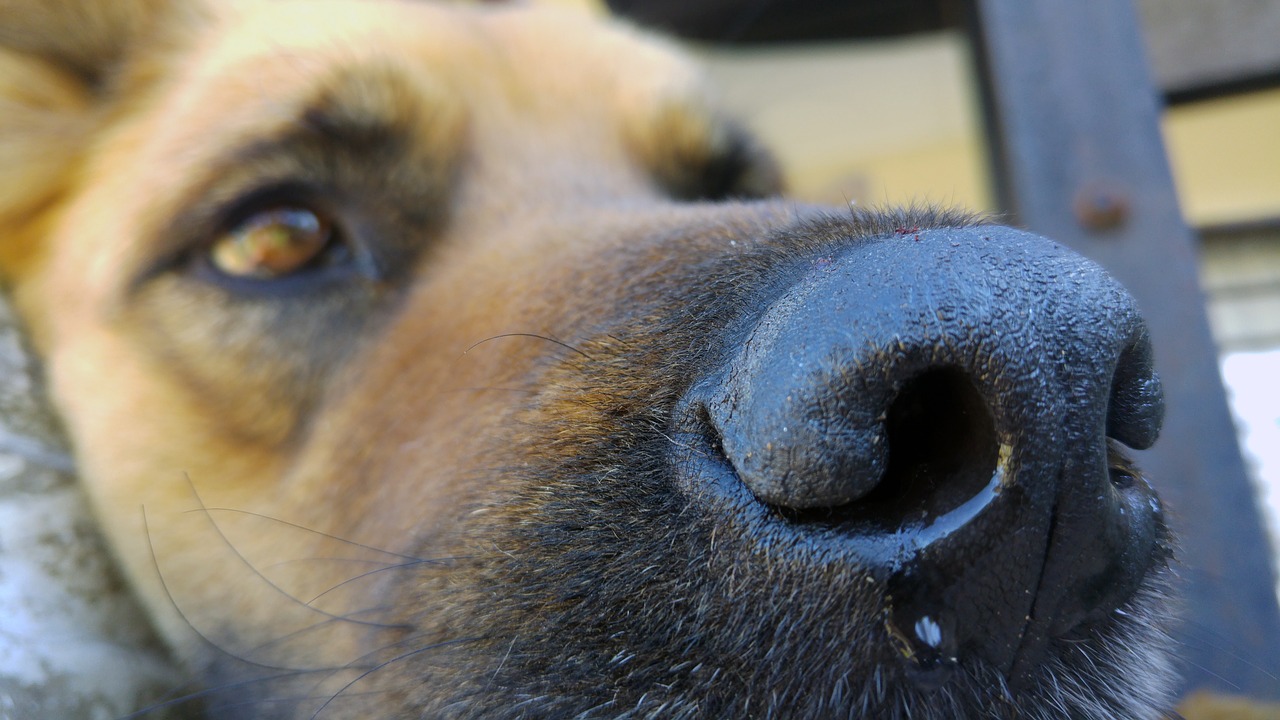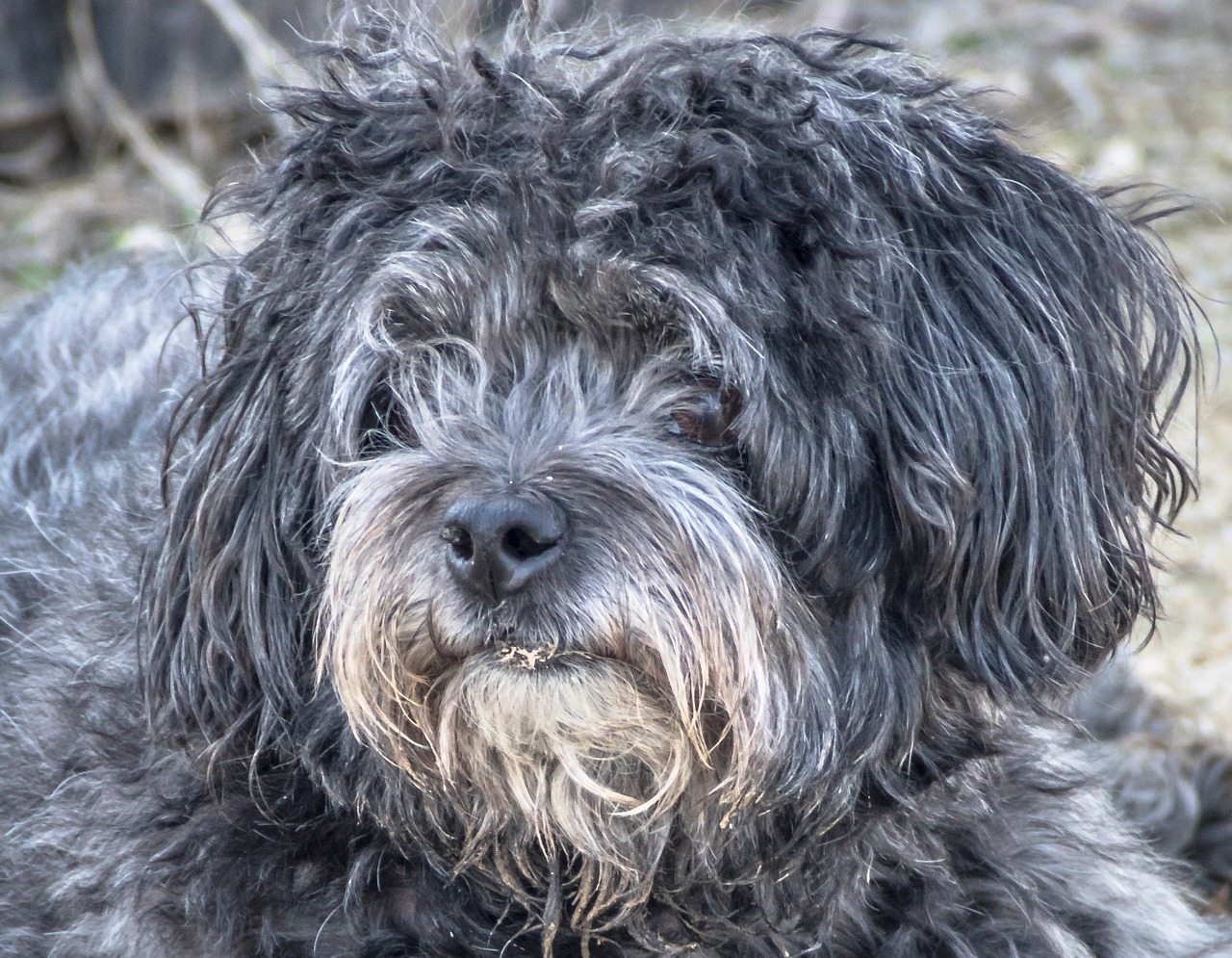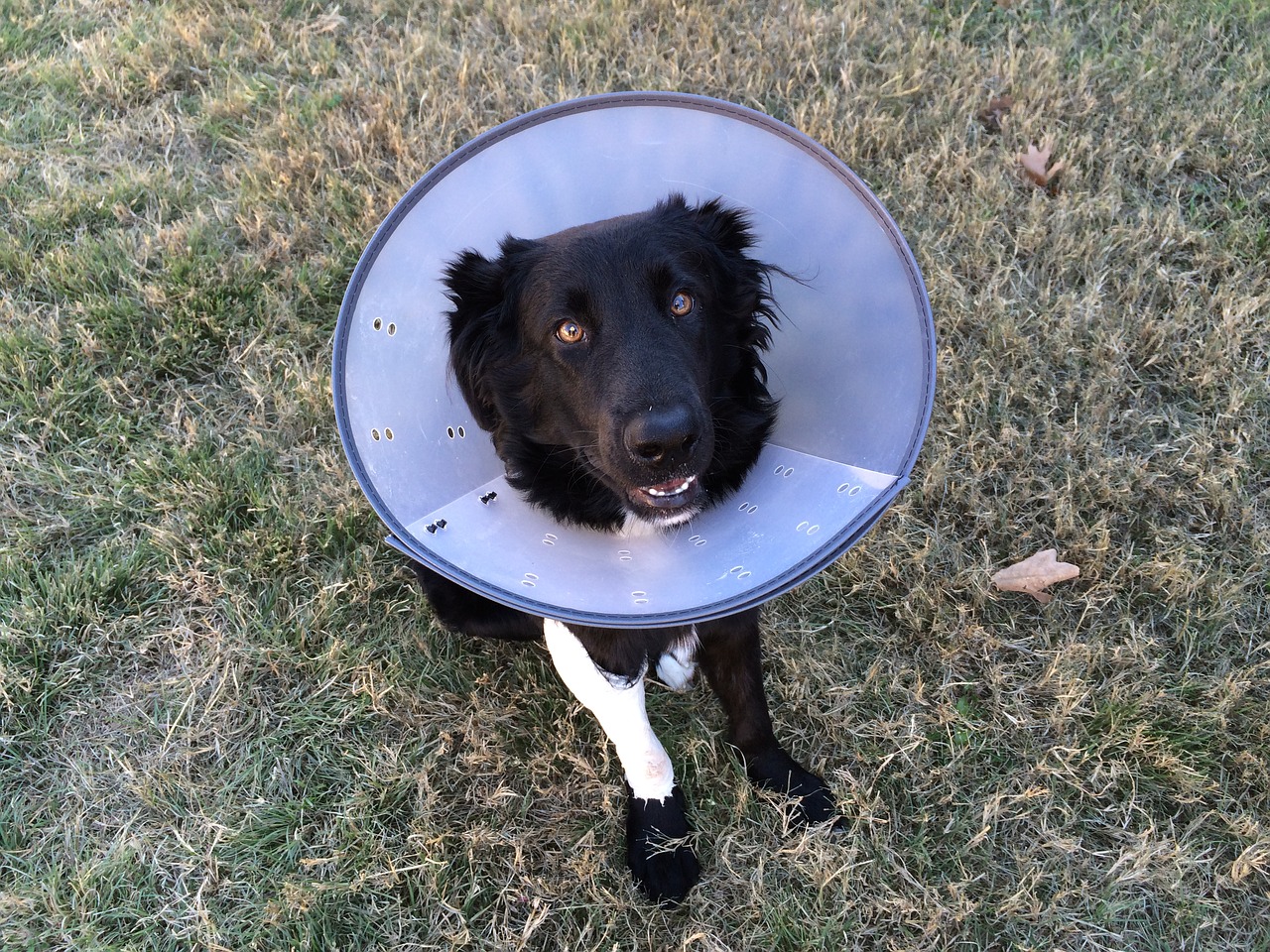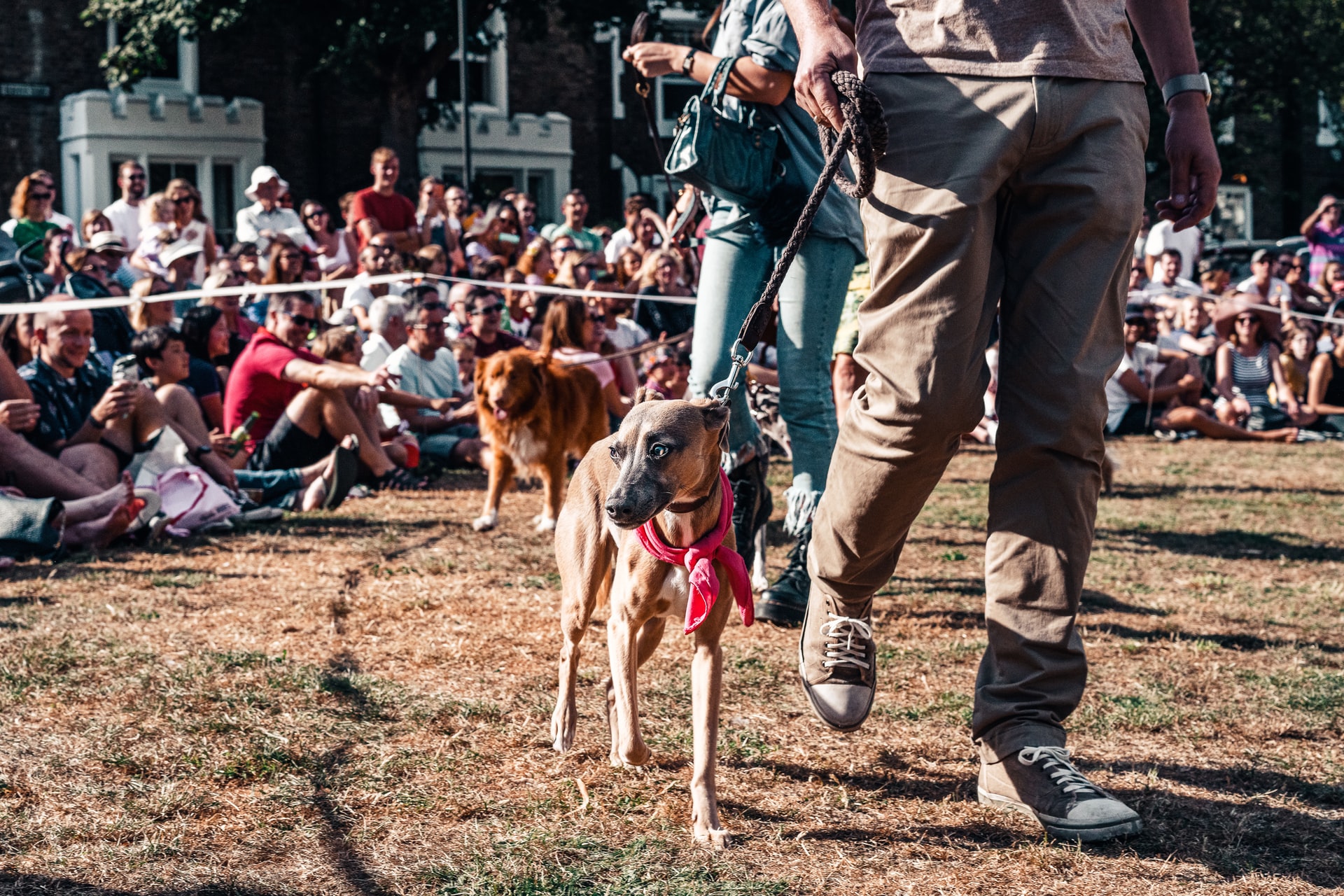Intelligent home nursing and professional veterinary advice will speed your dog’s recovery from a serious illness or injury. When the veterinarian discharges the dog from the hospital and commits him to your care, it will be up to you to give medicine, administer to the dog’s daily needs and nurse him through his convalescence. The veterinarian expects you to see to it that the dog gets his medicine and he will also expect you to keep him informed of the dog’s progress. Fortified with the information in this section, you will be able to do a competent job of nursing your dog back to health.
The sick room
The very sick or injured dog needs peace and quiet, away from household noises and boisterous play of children. If possible, put the dog in a room that is isolated, comfortable, well ventilated (but not drafty) and easily cleaned. You can facilitate the general cleaning problem by removing rugs and carpets and spreading several thicknesses of newspaper on the floor in the area the dog will occupy. Curtains or other material should be hung over the windows to shield the dog from excessive or bright light. This is important in those diseases or conditions in which the dog has photophobia. (Distemper, for example.) Shredded newspaper, cedar shavings or a washable blanket can be used as bedding for the sick dog. Hang a thermometer near the dog so that you can keep an eye on the room temperature, which should be kept between 70° and 72°F. Place the thermometer so that it hangs a foot or so above the dog’s head; the temperature at his level is the most important.

Equipment and utensils
You’ll need a work area in the sick room. A small table or bench will prove useful. On it you can keep medicines, food and water pans, grooming equipment and so forth. Keep labels on all medicines and if there are small children in the house, either lock the sick room door or put the medicines in a box with a lock. Wash and sterilize all pans, dishes and spoons after each use. Use a detergent and germicide and rinse in boiling water. Be sure to wash your hands before and after handling the sick dog.
Progress chart
Keep a chart or notebook on the dog’s progress. It will be especially useful when you report to the veterinarian over the telephone. Make daily entries on the chart of the dog’s temperature, dosages of medicine, symptoms and other pertinent information that will be useful to the veterinarian.
Observing the dog’s general condition
- Make a habit of noticing the dog’s general condition. Here are some features to look for:
- Breathing: Is the dog’s breathing rapid? Slow? Strained? Gasping? Irregular?
- Bowel movements: How are the dog’s bowel movements? Are they loose? Diarrhea? Bloody? Is he constipated?
- Eyes: Are the eyes inflamed? Is there a discharge? Are they weeping? Dull? Bright? Are the eyes affected by light?
- Muscular control: Is the dog very weak? Can he turn over? Is he paralyzed? Can he move his legs?
- Appetite: How is the dog’s appetite? Is it poor? Fair? Good? Fussy? Or does he have no appetite?
- Urinary system: Can the dog empty his bladder? How is the urine? Is it colorless? Amber? Dark? Bloody? Does he urinate frequently or sparsely?
Add to these any other symptoms which you notice and that will be of value to the veterinarian in determining the dog’s progress.
Daily temperature

The dog’s daily temperature is an important diagnostic aid and indicator of progress. Remember that the dog’s temperature will fluctuate during the day. It is usually low in the morning and high in the late afternoon and early evening. Therefore, take a temperature reading twice daily; in the morning and later afternoon or early evening.
Giving the dog his medicine
Depending on how you go about it, medicating the dog can be an easy chore or a struggle. Dogs are very much like people when it comes to taking medicine. They just don’t like it. Some dogs will clamp their mouths shut and struggle fiercely, others will simply regurgitate the medicine if you are inept. The result in both cases is that the dog gets less than the prescribed dosage or none at all. But with a little patience and skill, you can give the dog his medicine with a minimum of wear and tear on your nerves and very little struggle on the part of the dog.
Until you’ve acquired some skill in administering the medicine, it’s best to have someone help you. The assistant can restrain the dog while you give the medicine. When you take the dog to the veterinarian, he usually has you or an assistant hold the dog while he examines or treats the dog. Now bear in mind that the veterinarian is a skilled man when it comes to handling animals. Yet he rarely tries to wrestle with a dog and at the same time give medicine. So there is no reason why you should try to overpower the dog and try to medicate him at the same time. The idea is to get the medicine into the dog, not prove that you are the boss. When you are working with a very sick or paralyzed dog, the job is not too difficult. The dog will be too weak to put up a struggle. Your main problem here will be to get the dog’s mouth open. But this can be done.

Capsules, pills and tablets
The simplest way to give capsules, pills or tablets is to put them into the dog’s food or a specially prepared meatball. Since he ordinarily gulps or bolts his food, the medicine will go down easily. Once in awhile, a dog is not taken in by this subterfuge. He detects the medicine in the food and will eat around it. If you have such a dog or one that refuses to eat at all, you will have to put the capsule, pill or tablet directly into his mouth.
Here is the way to give the dog solid medicine:
- Open his mouth by grasping his upper jaw with your.
- left hand. Push his upper lips down over his teeth and hold
- them there with your fingers. If he tries to bite, he’ll bite
- his lips.
- Tilt his head upward. This action will cause his lower
- jaw to open.
- Next, place the capsule, pill or tablet well back into
- his mouth at the base of the tongue with the fingers of your
- right hand. Hold down his lower jaw as you do so. If you
- are left-handed, reverse the procedure.
- When you have placed the medicine, close the dog’s
- mouth and hold it shut with your fingers.
- Stroke or massage his throat until he swallows. It’s important to wait for him to swallow, otherwise he’ll spit out the medicine when you release his mouth.
Liquid medicines
Administering liquid medicines is not as difficult as it may seem. A few “tricks of the trade” will help you to give the dog liquids without spilling them. It’s best to have someone restrain the dog until you have some experience

First, pour the medicine into a small bottle or syringe. Make a pouch in the side of the dog’s mouth by pulling out the fleshy lower jaw skin or jowels. Now slowly pour the liquid into the pouch, close the pouch and let the dog swallow. If you pour slowly, the dog will usually swallow as the medicine is being poured into the pouch.
Cleaning the sick dog
The very sick or paralyzed dog will be unable to move away from his bed to empty his bowels or bladder. In this situation, he will soil the bed and himself.
Your cleaning task will be easier if you put a washable blanket or cloth under the very sick or paralyzed dog. While cedar shavings and shredded newspaper make good bedding for the ambulatory dog, they complicate the cleaning of the bedridden dog. You can, if you wish, put a diaper on the very sick or paralyzed dog. This may sound ridiculous, but it will save you some work.
After you’ve cleaned the dog’s bed, turn your attention to the dog. Wash off any soiled spots with mild soap and warm water. If the hair is matted, soften it and comb with care. The hair around the hindquarters may be matted and snarled with dried feces. Trim this away, if you can’t comb it out. Wash the dog’s eyes, nose and ears with warm water. Apply eye ointment when needed. If the dog vomits, wipe his mouth with a mild table-salt and water solution. A gentle brushing all over will help the sick dog spiritually, as well as physically. The sick dog should be turned over three or four times a day. By turning him over, you will help eliminate strain or discomfort from lying too long in one position. It will also help prevent bedsores.
Giving the dog an enema
Dogs unable to stand up very often become constipated. If ordinary laxatives fail or if the veterinarian has not advised giving laxatives, you will have to give the dog an enema when he is constipated.
Bedridden dogs usually do not present much of a problem as far as giving an enema is concerned. But the dog that is sick, yet able to move around, may put up a struggle. Don’t tussle with him; have someone restrain the dog.
The enema is best administered in the bathtub, since the mess can be flushed away and the tub washed and sterilized. Use a regular quart-size enema bag with a small nozzle for small dogs and a larger nozzle for big dogs. A small syringe can be used to give an enema to toy or miniature dogs. The enema solution can be ordinary soap and warm water. It should be heated to body temperature (101° to l02° F.).
Steps in giving the dog an enema
- Fill the enema bag with the soap and warm water solution.
- Dip the nozzle in Vaseline or mineral oil. Make sure
- that you don’t plug the hole in the nozzle.
- Open the clamp on the tube to clear out air.
- Close the clamp and gently insert the nozzle about
- three inches into the rectum.
- Hold or hang the enema bag about a foot higher than
- the dog’s body.
- Open the clamp and allow the solution to flow slowly
- into the rectum. But keep the pressure low. You can regulate the pressure by lifting or lowering the enema bag. Lift it and the pressure will increase; lower it and the pressure will decrease.
- When the solution is in the dog’s rectum, close the
- clamp and let the dog hold the solution for a minute or two.
- Quickly remove the nozzle from the rectum and the
- dog will expel the enema solution and feces.
Feeding the sick dog

The dog will need a daily nourishing ration to help him recover from a serious illness. If the veterinarian has placed the dog on a special diet, see that nothing else is fed. A dog recuperating from an injury can usually be given his regular ration.
If the dog has difficulty in keeping his food down, eliminate solid food and substitute broths or beef bouillon. Give them to the dog in small quantities three or four times a day. When you’ve brought the vomiting under control for 24 hours, gradually introduce solid foods in small quantities. Chopped meat, Pablum or Cream of Wheat will be bland enough to stay down in most cases. Keep increasing the solid food over a three-day period until the dog can eat with out vomiting.
Should diarrhea develop, cut out the regular diet and switch to boiled milk, cottage cheese, boiled rice, macaroni or Pablum. A commercially prepared diarrhea medicine, such as Peptobismol, will help in severe cases of diarrhea.
Many seriously ill dogs refuse to eat or just pick at the food. You’ll have to force-feed your dog if he refuses to eat. Try tempting him with a variety of food, if he is not on a restricted diet. Beef liver, heart or kidney is appetizing and the more aromatic you make the food, the more likely the dog will be to eat it. Experiment with the food, it’s worth the effort. Tomato juice, egg yolks, even brandy, have all been used with success in getting nourishment into the dog that refuses to eat.
The very weak dog may have to be hand-fed. Feed broths by way of a bottle and pouring into a pouch in the side of the mouth. Other soft foods can be fed by putting them back on the tongue (in very small quantities) and stroking the dog’s throat to make him swallow. In general, do everything you can to get the dog to eat. The speed of his recovery— perhaps his life—will depend on nourishment.
Dressings and bandages

Don’t fool around with dressings or bandages unless the veterinarian asks you to or they come off. In most cases, the veterinarian will attend to the dressings and bandages. He may ask you to put a protective device on the dog to prevent the dog from tearing off bandages or biting sores. This device is known as an Elizabethan collar.
The Elizabethan collar is simple to make. Cut a semicircle out of heavy cardboard, with the inner or smaller circumference fitted snugly to the dog’s neck. Make the outer circumference wide enough so that when the collar is in place, the outer arc extends beyond the dog’s nose-tip. This will prevent him from reaching wounds or sores. Punch holes in the straight sides of the collar, insert laces, and lace the collar around the dog’s neck, just below the jawline. When the collar is in place, it will resemble a rat guard on a ship’s dock line.
To sum up: nursing your dog through a serious illness or injury requires time and devotion. But just think how devoted the dog is to you. He’s willing to lay down his life to save yours. You ought to be willing to help save his.











